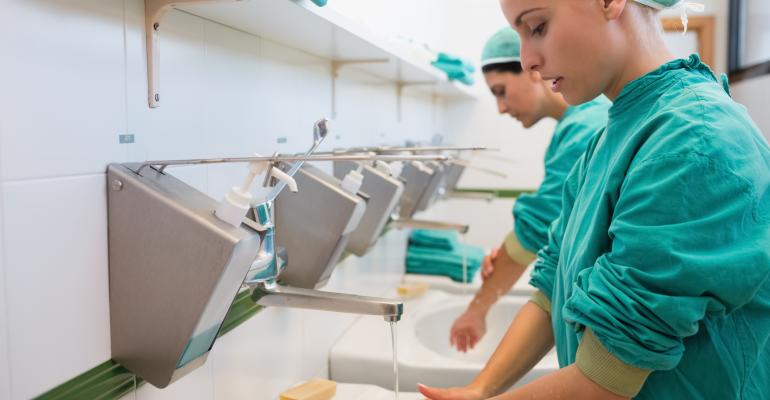When a patient visits a hospital, there are a number of questions running through their mind. The most common ones include what will the diagnosis be, and will I be taken care of? But they won’t be stressing about water safety, as it is taken for granted that the building is a sanatorium of sanitation. But think about it. Water is used throughout a hospital for everything right from steam generation, heating/cooling, sterilisation of surgical instruments, dialysis treatment, among others. So, how then do hospitals ensure that the water running through their veins is of the highest standard?
Arab Health Magazine had a chat with Franco Ferrari, Engineering and Operations Director, Culligan Middle East, to find out what happens behind the scenes when it comes to water safety in hospitals. A renowned water treatment company, Culligan provides water solutions for hospitals across the region, complying with the strictest medical and healthcare standards.
Ferrari, who is celebrating his 40th year with the company, shared: “In the early 1970s, Culligan started working with hospitals in specific sectors. A hospital needs water for all its services and utilities, right from toilets, to drinking water, but they also have certain specific divisions for which they need water. This includes laboratories, dialysis, and also the technical part such as the boiler or cooling tower. We cover all these requirements, starting from the water treatment of the building, to disinfection, filtration, and softening. The water needs to be treated to ensure that when it is distributed in the hospital to the many different toilets, labs or patient rooms, it is pure, organic and sanitised.”
In the laboratory, the treated water is used for washing equipment, and for disinfecting tools that will be used for surgeries. It is also used for steam sterilisation of equipment.
He explained that, for instance, some hospitals have the facility of a rehabilitation pool, and these need to be treated with quality water, otherwise it could produce bacteria such as Legionella, causing diseases. “This is a cause of concern as the people in the hospital are quite sick, so they are weak, and Legionella can attack them very easily and we have to prevent it from growing into the water.”
The water needs to be treated to ensure that when it is distributed in the hospital to the many different toilets, labs or patient rooms, it is pure, organic and sanitised.
Safe and reliable
Recently, when a hospital in the UAE needed to update its haemodialysis water treatment equipment and process, Culligan designed a water filtration system to provide the right quality of water for the haemodialysis loop, in the process bringing a reduced need for desensitisation and lower chemicals impacts, along with significant time and cost savings. The company also updated the material of the pipe of the distribution, in order to make it suitable for disinfection with hot water or steam.
Ferrari emphasised that the focus should not only be on the water treatment itself but also on the way the water is distributed in order to avoid having any stagnant water in the pipeline. “We design these elements carefully so that there is no contamination growing into the pipeline. Also, the pipeline needs to be sterilised periodically. We use hot water, at 80 to 85 degrees, to clean the equipment and pipes, and to remove and kill most of the bacteria. We were one of the first companies to apply reverse osmosis in dialysis,” he added.
Another factor for consideration is ensuring that there is no stop in the flow of the water. For example, if a patient has started the process of dialysis, it can’t just stop in between for four hours. Ferrari highlighted that therefore all the equipment should be carefully controlled and verified.
He stressed: “We have a system controlled by PLC, a computerised system that calculates the quality of water, in order to avoid wasting unnecessary water and be more sustainable. We also have online test equipment that measures the chlorine content and our technicians have test kits to do a field test analysis. The quality produced by the equipment has to meet international standards. Emphasis also has to be given on the material used and how you can disinfect and maintain the equipment.”
Ferrari concluded: “In my previous work experience, I used to be involved in commissioning of water treatment plants across Europe, Africa and the Gulf. There is no more satisfaction than to give good water to people. The first thing I used to do was to drink a glass of water in front of them, to assure them that the water was good. And when it comes to hospitals, nothing gives more satisfaction than producing something that can benefit humanity.


